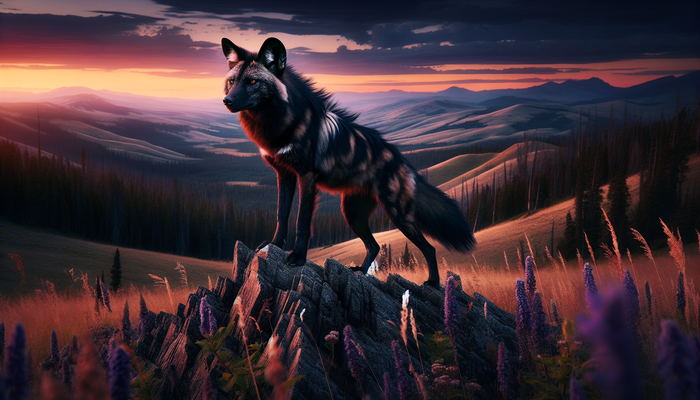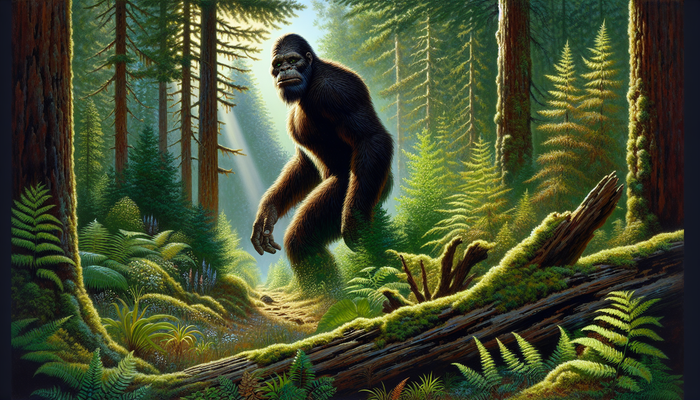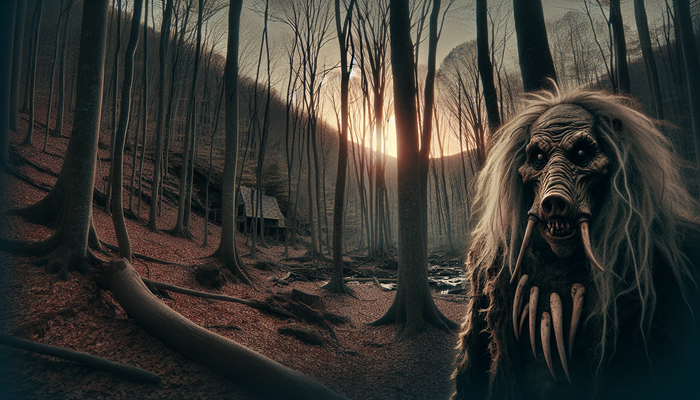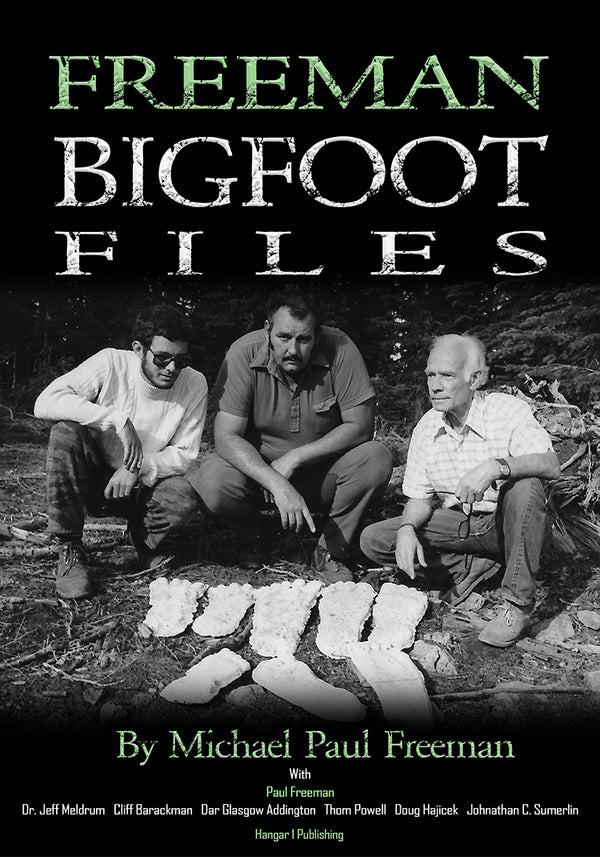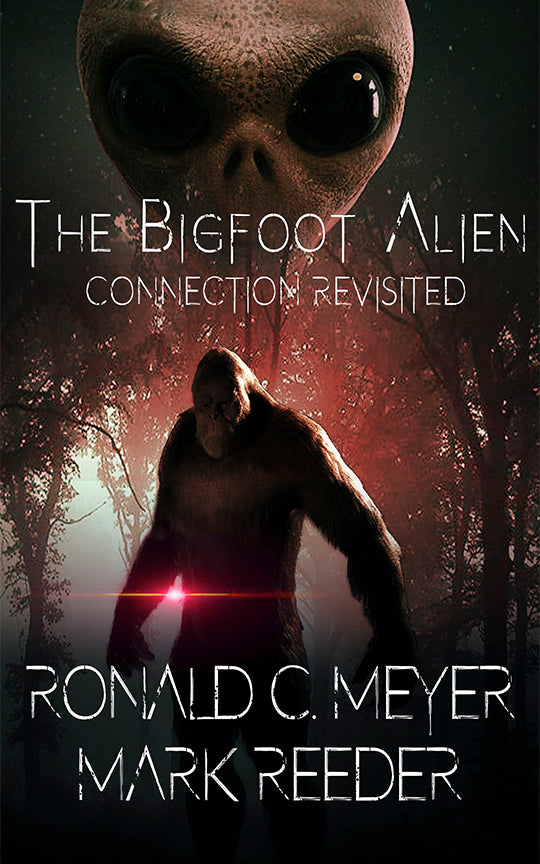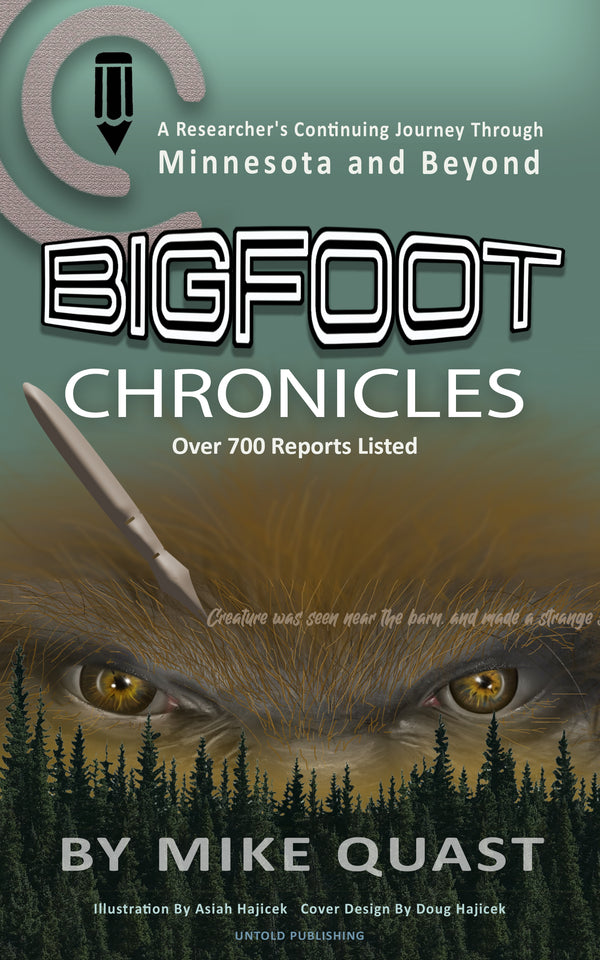Bigfoot Sightings Across the Lone Star State of Texas

By Lucas Jennings, Cryptozoologist
The sun had just dipped below the horizon, painting the East Texas sky in a vibrant array of oranges and pinks, when the two young boys decided to venture into the dense thicket for a hog hunt. Little did they know that their lives were about to change forever. As they crept through the underbrush, a strange silence fell over the woods—no birds chirping, no insects buzzing. Suddenly, a massive, hairy creature emerged from the shadows, standing at an imposing 7 to 8 feet tall. The boys froze, their eyes locked with the beast's, as it stared back at them for what felt like an eternity. Then, just as quickly as it had appeared, the creature turned and bounded away, vanishing into the depths of the forest.
This chilling encounter, which took place in the Big Thicket region of East Texas in 1962, is just one of the countless Bigfoot sightings that have been reported across the Lone Star State over the years. From the dense, swampy forests of the east to the wide-open plains of the Panhandle, Texas has long been considered a hotbed for Bigfoot activity, with a rich history of sightings and legends that have captivated the public's imagination for generations.
In this article, we'll embark on a journey through the annals of Texas Bigfoot lore, exploring the most compelling encounters, the fascinating regional variations, and the enduring cultural impact of this enigmatic creature. We'll delve into the theories and speculations surrounding the Texas Bigfoot, examine the efforts of dedicated researchers to uncover the truth, and ponder the future of this ongoing mystery. So, grab your hiking boots and your sense of adventure, and let's set off on a quest to uncover the legends and lore of Bigfoot sightings across the Lone Star State.
The Early History of Bigfoot in Texas
Long before the term "Bigfoot" entered the popular lexicon, the indigenous peoples of Texas were sharing stories of mysterious, hairy giants that roamed the forests and mountains. These legends, passed down through generations, provide a fascinating glimpse into the deep-rooted history of Bigfoot-like creatures in the region.
The Caddo tribe, who inhabited the dense forests of East Texas, had tales of "hairy giants" that lurked in the shadows of the towering pines. These beings were described as powerful, intelligent, and sometimes even possessing supernatural abilities. The Caddo believed that these creatures were not to be trifled with and that encountering one could bring either great fortune or great misfortune, depending on the circumstances.
Similarly, the Cherokee, who were forcibly relocated to Texas in the early 19th century, brought with them their own legends of a creature they called the "Bear King of Marble Falls." This beast was said to be a massive, hairy, manlike being that roamed the rugged terrain of the Hill Country, striking fear into the hearts of all who encountered it.
While these Native American legends provide a tantalizing glimpse into the early history of Bigfoot-like creatures in Texas, the first documented sighting in the state dates back to 1837, when settlers in the Navidad River region of South Texas reported seeing a "wild woman" covered in short, brown hair. According to the accounts, this creature was incredibly fast and agile, eluding capture by even the swiftest of horses.
The "Wild Woman of the Navidad" sighting, as it came to be known, set the stage for the countless Bigfoot encounters that would follow in the decades to come. As more and more settlers began to tame the once-wild lands of Texas, stories of hairy, ape-like creatures continued to emerge from the shadows, hinting at a mystery that would captivate the imaginations of generations of Texans.
Famous Texas Bigfoot Legends
As the 20th century progressed, Texas became home to some of the most famous and enduring Bigfoot legends in the country. These stories, which often involved multiple witnesses and garnered significant media attention, helped to cement the Lone Star State's reputation as a Bigfoot hotspot.
The Lake Worth Monster
One of the most iconic of these legends is the tale of the "Lake Worth Monster" or "Goat-Man" of Fort Worth. In the summer of 1969, the shores of Lake Worth were gripped by a series of bizarre sightings that would go down in Texas Bigfoot history. Numerous witnesses reported seeing a creature that stood over 7 feet tall, with a goat-like head, cloven hooves, and a foul odor that lingered in its wake.
The sightings sparked a media frenzy, with newspapers across the state running sensational headlines about the "Goat-Man" that had taken up residence at Lake Worth. Crowds of curious onlookers descended upon the lake, hoping to catch a glimpse of the mysterious creature. While the Lake Worth Monster was never conclusively identified, the legend has endured as a testament to the enduring fascination with Bigfoot in Texas.
The Wild Man of the Big Thicket
Another famous Texas Bigfoot legend is that of the "Wild Man of the Big Thicket." For decades, the dense, swampy forests of East Texas have been a hotbed of Bigfoot activity, with countless sightings of a large, hairy biped that moves with incredible speed and agility through the underbrush.
One of the most compelling encounters in the Big Thicket occurred in 1962, when two young boys claimed to have had a face-to-face encounter with a massive, ape-like creature. The boys, who were out hunting hogs, described the creature as standing around 7 to 8 feet tall, with long, shaggy hair and a powerful, muscular build. They claimed that the creature stared at them for several seconds before turning and bounding away at an astonishing speed, disappearing into the depths of the forest.
The "Wild Man of the Big Thicket" has become a fixture of Texas Bigfoot lore, with countless other sightings and encounters reported in the region over the years. Many researchers believe that the dense, swampy terrain of the Big Thicket provides an ideal habitat for a creature like Bigfoot, with ample food sources and plenty of cover to avoid detection.
Notable Texas Bigfoot Encounters
While the "Lake Worth Monster" and the "Wild Man of the Big Thicket" may be the most famous Texas Bigfoot legends, they are far from the only notable encounters that have been reported in the state over the years. From the Panhandle to the Gulf Coast, Texans have been sharing stories of their brushes with the mysterious creature for generations.
The 1962 Big Thicket Sighting
One of the most intriguing encounters occurred in 1962, in the heart of the Big Thicket. Two young boys, out hunting hogs, claimed to have had a face-to-face encounter with a massive, ape-like creature that stood around 7 to 8 feet tall. According to their account, the creature emerged from the underbrush and stared at them for several seconds, its eyes locked with theirs. Then, just as quickly as it had appeared, the creature turned and bounded away at an astonishing speed, disappearing into the forest.
The boys' encounter, which has become known as the "1962 Big Thicket Sighting," is considered one of the most credible and compelling Bigfoot encounters in Texas history. The consistency of their story, combined with the fact that they had no apparent motive to fabricate such a tale, has led many researchers to believe that they truly did have a brush with the legendary creature.
The Dayton Bigfoot
Another notable Texas Bigfoot encounter occurred in 1993, near the town of Dayton in the eastern part of the state. A squirrel hunter, out in the woods, claimed to have had a close encounter with a large, hairy creature that stood around 7 feet tall. What made this sighting particularly interesting was the fact that the creature reportedly lacked the typical foul odor and other signs that are often associated with Bigfoot encounters.
The hunter's account led some researchers to speculate that there may be a unique, stealthier variant of the creature inhabiting the forests of East Texas. This "Dayton Bigfoot," as it came to be known, was described as being more elusive and difficult to detect than its counterparts in other parts of the state, adding yet another layer of intrigue to the already fascinating world of Texas Bigfoot lore.
Regional Variations in Texas Bigfoot Sightings
One of the most fascinating aspects of the Texas Bigfoot phenomenon is the sheer diversity of the sightings that have been reported across the state. From the dense, swampy forests of the east to the wide-open plains of the west, Bigfoot seems to have adapted to a wide range of environments, leading some researchers to speculate that there may be several distinct regional variants of the creature.
The Panhandle Bigfoot
In the Texas Panhandle, for example, witnesses have reported seeing a unique, cone-headed variant of Bigfoot that seems to be particularly well-suited to the arid, open landscapes of the region. This "Panhandle Bigfoot" is described as being taller and leaner than its counterparts in other parts of the state, with a distinctive, pointed cranium that sets it apart from the more typical dome-headed Bigfoot.
Some researchers believe that the Panhandle Bigfoot may represent a unique, localized population of the creature that has evolved to thrive in the harsh, unforgiving environment of the region. The open plains and rugged canyons of the Panhandle would provide ample space for a creature like Bigfoot to roam undetected, while the abundant wildlife and scattered water sources would ensure a steady supply of food and sustenance.
The Hockley County Howler
Another intriguing regional variant of the Texas Bigfoot is the so-called "Hockley County Howler." In 2010, residents of Hockley County, located just southwest of Lubbock, reported a series of sightings of a large, hairy creature with long, black fur and piercing yellow eyes. What made these sightings particularly noteworthy was the fact that they occurred in relatively populated suburban areas, rather than the remote wilderness where Bigfoot is typically thought to reside.
The Hockley County sightings led some researchers to speculate that Bigfoot may be more adaptable and resilient than previously believed, capable of living in close proximity to human activity without being detected. The fact that the creature was described as having long, black fur and yellow eyes also suggested that it may be a distinct subspecies or regional variant of the more commonly reported brown or reddish-haired Bigfoot.
These regional variations in Texas Bigfoot sightings highlight the incredible diversity and adaptability of the creature, and underscore the need for continued research and investigation into the phenomenon. By studying the unique characteristics and behaviors of these regional variants, researchers may be able to gain valuable insights into the ecology and evolution of Bigfoot, and perhaps even uncover clues that could lead to a definitive answer to the question of its existence.
The Bigfoot Research Community in Texas
Given the sheer volume and diversity of Bigfoot sightings in Texas, it's no surprise that the state has become a hub for Bigfoot research and investigation. Over the years, a dedicated community of researchers, enthusiasts, and eyewitnesses has emerged, working tirelessly to gather evidence and unravel the mystery of the legendary creature.
The Texas Bigfoot Research Conservancy (TBRC)
At the forefront of this community is the Texas Bigfoot Research Conservancy (TBRC), a nonprofit organization dedicated to investigating and documenting Bigfoot sightings across the state. Founded in 2001, the TBRC has become one of the most respected and influential Bigfoot research groups in the country, with a team of experienced investigators and a comprehensive database of over 250 reported encounters.
The TBRC's approach to Bigfoot research is rooted in scientific rigor and empirical evidence. The organization's investigators carefully document each reported sighting, interviewing witnesses, collecting physical evidence, and analyzing data to determine the credibility and significance of each encounter. This meticulous approach has helped to establish the TBRC as a leader in the field of Bigfoot research, and has earned the organization the respect of both believers and skeptics alike.
Operation Forest Vigil
One of the TBRC's most notable research efforts was the 2005 "Operation Forest Vigil" expedition in the Big Thicket region of East Texas. This ambitious project involved a team of investigators camping out in the heart of the Big Thicket for several weeks, using advanced surveillance equipment and techniques to try to capture evidence of Bigfoot's existence.
While the expedition did not yield any definitive proof of Bigfoot's presence in the Big Thicket, it did produce a wealth of valuable data and insights into the creature's possible behavior and habitat preferences. The TBRC's investigators reported hearing strange vocalizations and knocking sounds in the woods at night, and even claimed to have found several large, humanlike footprints in the soft mud along the banks of a nearby creek.
The TBRC's work has helped to bring a new level of credibility and legitimacy to the field of Bigfoot research in Texas, and has inspired countless other investigators and enthusiasts to take up the search for the legendary creature. By combining rigorous scientific methods with a deep respect for the eyewitness accounts and cultural traditions surrounding Bigfoot, the TBRC has helped to create a vibrant and dynamic research community that continues to push the boundaries of what we know about this fascinating and enigmatic creature.
Bigfoot's Place in Texas Culture and Folklore
Beyond the realm of scientific research and investigation, Bigfoot has also become a deeply ingrained part of Texas culture and folklore. From small towns to big cities, the legend of the hairy, ape-like creature has captured the imaginations of generations of Texans, inspiring countless stories, artworks, and cultural traditions.
The Bigfoot Capital of Texas
Perhaps nowhere is this cultural fascination with Bigfoot more evident than in the town of Jefferson, located in the heart of the Piney Woods region of East Texas. Known as the "Bigfoot Capital of Texas," Jefferson has embraced its status as a hub for Bigfoot research and tourism, hosting an annual Texas Bigfoot Conference that draws hundreds of enthusiasts from across the state and beyond.
The conference, which has been held every year since 2001, features presentations by leading Bigfoot researchers, eyewitness accounts from those who claim to have encountered the creature, and even guided expeditions into the surrounding forests in search of evidence of Bigfoot's presence. For many attendees, the conference is a chance to connect with like-minded individuals who share a passion for the mystery and wonder of the Bigfoot phenomenon.
Bigfoot in Popular Culture
But Jefferson is far from the only Texas town to have embraced Bigfoot as a cultural icon. Across the state, Bigfoot has become a ubiquitous presence in popular culture, inspiring everything from festivals and parades to books, films, and television shows. In recent years, Bigfoot-themed restaurants, gift shops, and even museums have begun to pop up in towns and cities across Texas, catering to the growing demand for all things Sasquatch.
This cultural fascination with Bigfoot is not just a passing fad or a quirky regional curiosity. For many Texans, the legend of Bigfoot is a deeply meaningful part of their cultural heritage and identity, a symbol of the state's rugged individualism, pioneering spirit, and connection to the natural world.
From Bigfoot to UFOs: Hangar 1 Publishing Has You Covered!
Explore Untold Stories: Venture into the world of UFOs, cryptids, Bigfoot, and beyond. Every story is a journey into the extraordinary.
Immersive Book Technology: Experience real videos, sights, and sounds within our books. Its not just reading; its an adventure.




